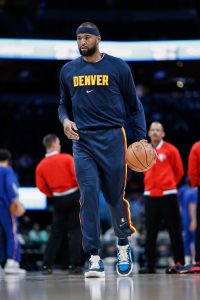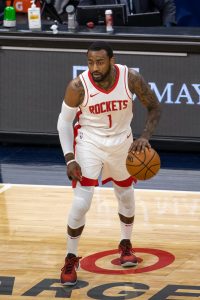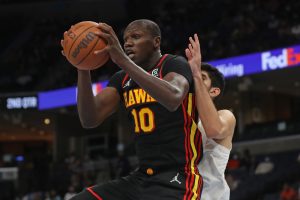The NBA’s Most Improved Player award is often the one that generates the most crowded field of candidates. While there are only so many legitimate contenders in a given season for awards like Most Valuable Player and Rookie of the Year, there could be dozens of players who have decent cases for MIP consideration.
This season, however, oddsmakers believe there’s a clear-cut frontrunner for Most Improved Player honors — betting sites like Bovada.lv and BetOnline.ag have made Grizzlies guard Ja Morant the overwhelming favorite. If you want to place a wager at BetOnline on Morant to win the award, you have to risk $2,000 just to potentially win $100.
Morant has certainly taken a leap in his third NBA season. His scoring average has increased from 19.1 PPG to 27.5 PPG, and his shooting percentages have improved too, from .449/.303/.728 a year ago to .495/.346/.763 in 2021/22. The ascendant point guard has led the Grizzlies to a 45-22 record, the second-best mark in the NBA.
As ESPN’s Tim MacMahon and Tim Bontemps observed this week on The Hoop Collective podcast (video link), Morant has gone from missing the All-Star team in his first two seasons to becoming an All-NBA lock and a viable MVP candidate, which Bontemps calls “the hardest leap to make.” That’s why he looks like the safe bet to take home the Most Improved Player award this spring.
But is Morant a lock? Hornets forward Miles Bridges, Cavaliers guard Darius Garland, Spurs guard Dejounte Murray, Trail Blazers guard Anfernee Simons, and Sixers guard Tyrese Maxey are among the next-best candidates listed at Bovada and BetOnline.
Bridges’ shooting numbers have dipped a little this year with his increased usage rate, but he has increased his scoring average from 12.7 PPG to 19.8 PPG and is putting up career highs in almost every other key category.
Garland has put up 21.0 PPG and 8.2 APG with a .480 FG% (all career highs) while playing a crucial role in the Cavaliers’ unexpected turnaround, but he had already established a pretty impressive baseline (17.4 PPG, 6.1 APG, .451 FG%) in his sophomore season in 2020/21.
Murray has taken his game to another level in his sixth season, with 20.6 PPG, 9.4 APG, and 8.4 RPG (all career highs) to go along with an NBA-best 2.1 SPG. The Spurs’ 25-41 record may hurt his case, however.
None of these candidates has improved his scoring numbers more than Simons, who averaged 7.8 PPG last season and is up to 17.3 PPG in 2021/22, without a drop in efficiency. Simons has benefited from an increased role, but his per-minute numbers are also the best of his career.
Maxey, meanwhile, helped the Sixers remain in the playoff mix this season with Ben Simmons absent, with 17.4 PPG and 4.4 APG on .481/.419/.864 shooting after playing a limited role as a rookie. It’s worth noting though that some voters shy away from second-year players, since it’s considered a given that most will take a significant step forward.
What do you think? Is Morant a lock to win this year’s Most Improved Player award? Do you think Bridges, Garland, Murray, Simons, Maxey, or someone else has a stronger case?
Head to the comment section below to weigh in with your thoughts!
 For example, when
For example, when  However, the February 10 trade deadline came and went without the Rockets finding a deal they liked. And now that March 1 (the deadline for a player to be waived while maintaining his playoff eligibility) has passed, it appears virtually certain that Wall will remain on Houston’s inactive list for the remainder of this season.
However, the February 10 trade deadline came and went without the Rockets finding a deal they liked. And now that March 1 (the deadline for a player to be waived while maintaining his playoff eligibility) has passed, it appears virtually certain that Wall will remain on Houston’s inactive list for the remainder of this season. 2021/22: $7MM
2021/22: $7MM 2021/22: $4MM
2021/22: $4MM